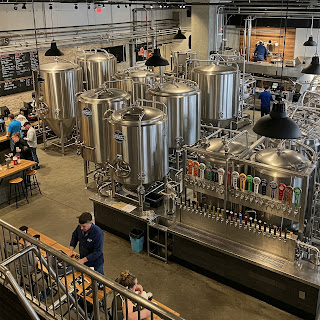Instrumentation Basics - Part 3: Control Systems
In the previous parts, we explored fundamental concepts and various types of instruments. Now, we'll delve into how these instruments are used within control systems to automate and optimize industrial processes.
1. Open-Loop Control
- A control system where the control action is independent of the process output.
- The controller takes action based on a predetermined schedule or setting, without feedback from the process.
- Example: A simple timer that turns a pump on and off at set intervals.
- Advantages: Simple, inexpensive.
- Disadvantages: Cannot compensate for disturbances or changes in the process.
2. Closed-Loop Control (Feedback Control)
- A control system where the control action depends on the process output.
- The measured value of the process variable is fed back to the controller, which compares it to the desired setpoint and adjusts the control action accordingly.
- Example: A thermostat that measures room temperature and turns a heater on or off to maintain the desired temperature.
- Advantages: Can compensate for disturbances and maintain the process variable at the setpoint.
- Disadvantages: More complex than open-loop control.
3. Basic Components of a Closed-Loop Control System
- Process: The system or operation being controlled.
- Measured Variable (Process Variable): The variable that is being controlled (e.g., temperature, pressure, flow).
- Setpoint: The desired value of the measured variable.
- Sensor/Transmitter: Measures the process variable and transmits a signal to the controller.
- Controller: Compares the measured variable to the setpoint and calculates the control action.
- Final Control Element: Implements the control action (e.g., control valve, motor).
4. Control Algorithms
- The controller uses a control algorithm to determine the appropriate control action.
- On-Off Control:
- The simplest control algorithm.
- The final control element is either fully on or fully off.
- Example: A home thermostat.
- Advantages: Simple, inexpensive.
- Disadvantages: Can cause oscillations or cycling.
- Proportional (P) Control:
- The control action is proportional to the error (difference between setpoint and measured variable).
- Reduces error but may not eliminate it entirely (offset).
- Advantages: Simple, reduces error.
- Disadvantages: Offset.
- Integral (I) Control:
- The control action is proportional to the integral of the error over time.
- Eliminates offset but can cause oscillations.
- Advantages: Eliminates offset.
- Disadvantages: Oscillations, slow response.
- Derivative (D) Control:
- The control action is proportional to the rate of change of the error.
- Improves stability and reduces oscillations.
- Advantages: Improves stability, reduces oscillations.
- Disadvantages: Sensitive to noise.
- PID Control:
- Combines proportional, integral, and derivative control actions.
- Provides accurate and stable control for most processes.
- Advantages: Accurate, stable.
- Disadvantages: Complex tuning.
5. Control System Performance
- Key metrics to evaluate control system performance:
- Stability: The ability of the system to maintain a steady state.
- Accuracy: How close the controlled variable is to the setpoint.
- Response Time: How quickly the system responds to changes in the setpoint or disturbances.
- Overshoot: The extent to which the controlled variable exceeds the setpoint before settling.
- Oscillations: The tendency of the controlled variable to oscillate around the setpoint.
6. Advanced Control Strategies
- Beyond basic PID control, more advanced strategies are used for complex processes:
- Cascade Control: Uses two controllers, where the output of the primary controller becomes the setpoint for the secondary controller.
- Feedforward Control: Anticipates the effect of disturbances and takes corrective action before they affect the process variable.
- Ratio Control: Maintains a constant ratio between two or more flow rates.
- Multivariable Control: Controls multiple interacting variables simultaneously.
This third part provides a detailed overview of control systems, explaining the fundamental concepts, control algorithms, and performance considerations. It also touches upon advanced control strategies used in more complex industrial applications.




Comments
Post a Comment